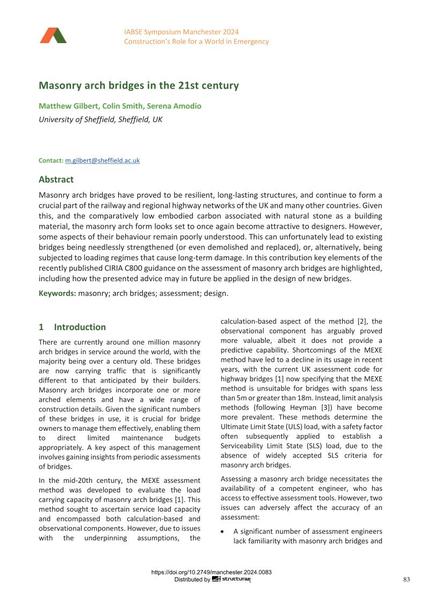Masonry arch bridges in the 21st century

|
|
|||||||||||
Bibliographic Details
| Author(s): |
Matthew Gilbert
(University of Sheffield, Sheffield, UK)
Colin Smith (University of Sheffield, Sheffield, UK) Serena Amodio (University of Sheffield, Sheffield, UK) |
||||
|---|---|---|---|---|---|
| Medium: | conference paper | ||||
| Language(s): | English | ||||
| Conference: | IABSE Symposium: Construction’s Role for a World in Emergency, Manchester, United Kingdom, 10-14 April 2024 | ||||
| Published in: | IABSE Symposium Manchester 2024 | ||||
|
|||||
| Page(s): | 83-89 | ||||
| Total no. of pages: | 7 | ||||
| DOI: | 10.2749/manchester.2024.0083 | ||||
| Abstract: |
Masonry arch bridges have proved to be resilient, long-lasting structures, and continue to form a crucial part of the railway and regional highway networks of the UK and many other countries. Given this, and the comparatively low embodied carbon associated with natural stone as a building material, the masonry arch form looks set to once again become attractive to designers. However, some aspects of their behaviour remain poorly understood. This can unfortunately lead to existing bridges being needlessly strengthened (or even demolished and replaced), or, alternatively, being subjected to loading regimes that cause long-term damage. In this contribution key elements of the recently published CIRIA C800 guidance on the assessment of masonry arch bridges are highlighted, including how the presented advice may in future be applied in the design of new bridges. |
||||
| Keywords: |
design arch bridges masonry assessment
|
||||
